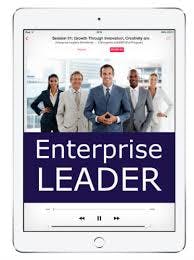Three-fourths of business units report they do not have the leaders they need for the future.
In fact, one-third of HR leaders, according to CEB’s recent study Creating Enterprise Leaders, would replace members of their current leadership team if given the chance.
This dissatisfaction with current leaders is not because they ineffectively demonstrate leadership competencies. On the contrary, the history of investments directed toward creating and sustaining strong individual leadership outcomes has paid off overall: 67 percent of leaders excel at key competencies, according to the research, and 82 percent of leaders are hitting their business unit objectives.
Traditional leadership models aren’t working
Although they don’t lack the right competencies, leaders do struggle to operate in the ever-changing work environment.
Unlike before, leaders must effectively manage increasingly complex portfolios of responsibilities and respond adeptly to more unfamiliar and less predictable situations. This new work environment has significantly affected both leader – peer and leader team dynamics — to such an extent that traditional leadership models will be insufficient.
To succeed in today’s work environment and to effectively drive business outcomes, leaders cannot simply focus on their individual objectives for themselves, their team, and their business unit. Rather, they must also focus on enterprise outcomes; they must be “Enterprise Leaders.”
Enterprise Leaders are defined by two types of outcomes:
- First, they achieve strong individual leadership performance by reaching their goals and leading their teams to do the same.
- Second, they show great network leadership outcomes — working with other leaders and their teams to transfer and acquire resources and best practices that improve organizational outcomes.
“Enterprise Leaders” are in short supply
Most organizations do not have Enterprise Leaders. Currently, only 12 percent of leaders are true Enterprise Leaders.
The payoff to closing the gap between the number of individual performers and Enterprise Leaders, however, is clear. A bench of Enterprise Leaders can boost business unit revenue by up to 22 percent.
In contrast, well-intentioned leaders concerned only with their business units’ needs achieve much more modest revenue gains (just 12 percent). A key to the outsized growth rate is the spillover effect that occurs between business units when all leaders act as Enterprise Leaders.
How do you build Enterprise Leaders? Traditional leadership development tactics like retooling competency models and replacing existing leaders are insufficient.
The best L&D functions are reimagining their leadership development programs as vehicles that not only build skills, but also enable leaders to effectively apply those skills in the new work environment.
